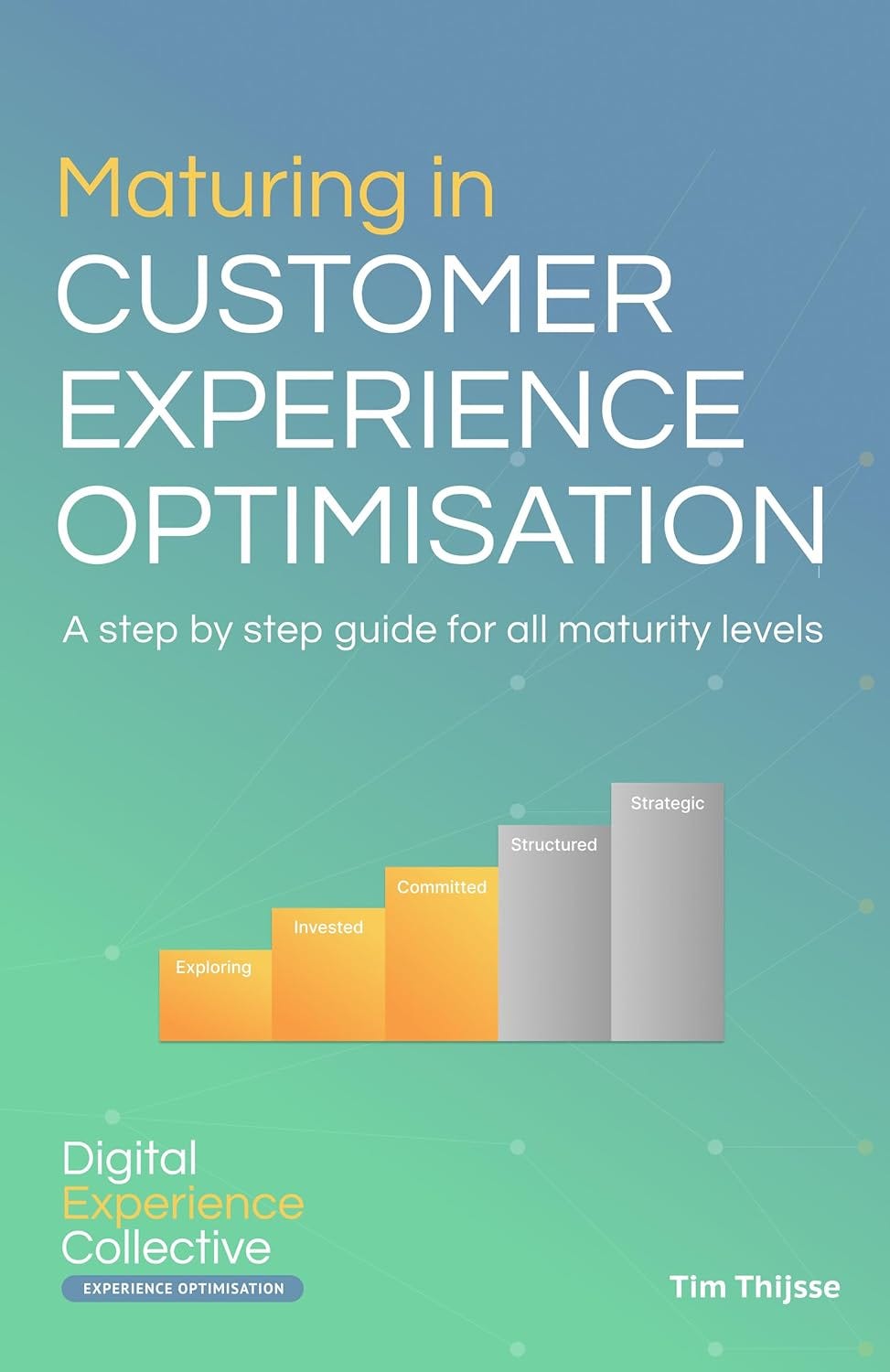CX Book Gems #31: "Maturing in Customer Experience Optimisation (CXO)" by Tim Thijsse
Book summary of "Maturing in Customer Experience Optimisation (CXO) : A step by step guide based on your customer maturity" by Tim Thijsse .
Today’s newsletter feature is Maturing in Customer Experience Optimisation (CXO) : A step by step guide based on your customer maturity by Tim Thijsse.
📘 Book Summary
This practical guide addresses the complexity of operationalizing customer experience (CX) by offering a maturity-based approach. Drawing on the author’s experience in user experience (UX) and service design, it provides marketers, designers, and managers with a clear roadmap for transforming organizations into truly customer-centric entities.
This book is written for marketers and designers who find themselves stuck in organizations that claim to be customer-centric but fail to put it into practice.
💎 3 CX Gems
1. CX optimization is a team sport
Customer experience optimization (CXO) requires collaboration across marketing, product, operations, and strategy teams. Success depends on shared goals, alignment, and cross-functional communication throughout the customer journey.
Design thinking fosters cross-functional teamwork, breaking down silos and aligning everyone around shared goals.
2. Maturity models enable measurable growth
The book defines five levels of CX maturity: Exploring, Invested, Committed, Structured, and Strategic. Using maturity models helps organizations identify where they are and take the right steps to evolve strategically.
These categories in a CX maturity model help organizations evaluate where they are on their journey to a customer-centric approach and provide guidance to improve and strengthen CX.
3. Voice of the Customer (VoC) Is a catalyst for change
A strong VoC program enables organizations to listen, learn, and act on customer feedback. When integrated with operational and experiential data, VoC helps build loyalty and drive innovation.
Listening to the VoC is crucial for understanding customer needs, identifying pain points, and driving improvements in the customer experience.
11 categories for operationalizing CX
Part 1: Strategy
Customer-Centric Culture: Embedding customer-focused values, behaviors, and norms throughout the organization.
Adoption within the Organization: Ensuring CX methods and principles are accepted and applied at all levels.
Leadership: Demonstrating strong top-level commitment to CX and communicating a clear customer-focused vision.
Accountability: Defining clear responsibilities and authority for driving CX initiatives across teams.
Strategy: Developing a well-aligned CX strategy that supports overall business objectives.
Part 2: Operation
Voice of the Customer: Collecting and analyzing customer feedback to guide decisions and improvements.
Customer Journey: Mapping and optimizing the end-to-end customer journey across all touchpoints.
Service Design: Structuring services and processes with the customer experience in mind.
Product Innovation: Leveraging customer insights to create and enhance products that meet customer needs.
Part 3: The System
Data, Metrics & Tooling: Using relevant data, KPIs, and technology to track, measure, and improve CX performance.
Knowledge: Creating systems to build, share, and sustain CX knowledge and best practices across the organization.
✅ 3 Quickstart Tips
1. Map your CX maturity. Take a self-assessment to benchmark your CX maturity across strategy, operations, and systems.
2. Start small, scale smart. Don't wait for perfection—begin by improving a single journey or silo with actionable feedback. Demonstrate impact and scale gradually across departments.
3. Align metrics with customer goals. Review your KPIs and incentives to ensure they prioritize long-term CX outcomes over short-term efficiency metrics.
Operationalizing CX requires more than good intentions—it demands a structured, cross-functional approach that touches every part of the organization. By aligning around these 11 pillars, organizations can help turn customer-centricity from an aspiration into a sustainable reality, and build a scalable foundation for long-term growth and loyalty.

